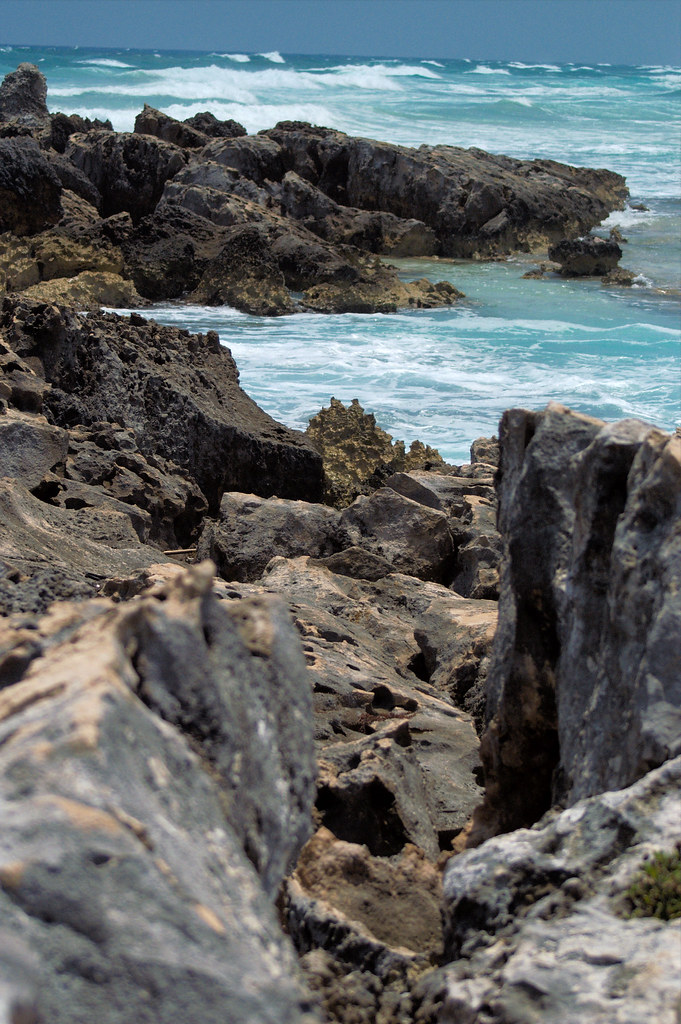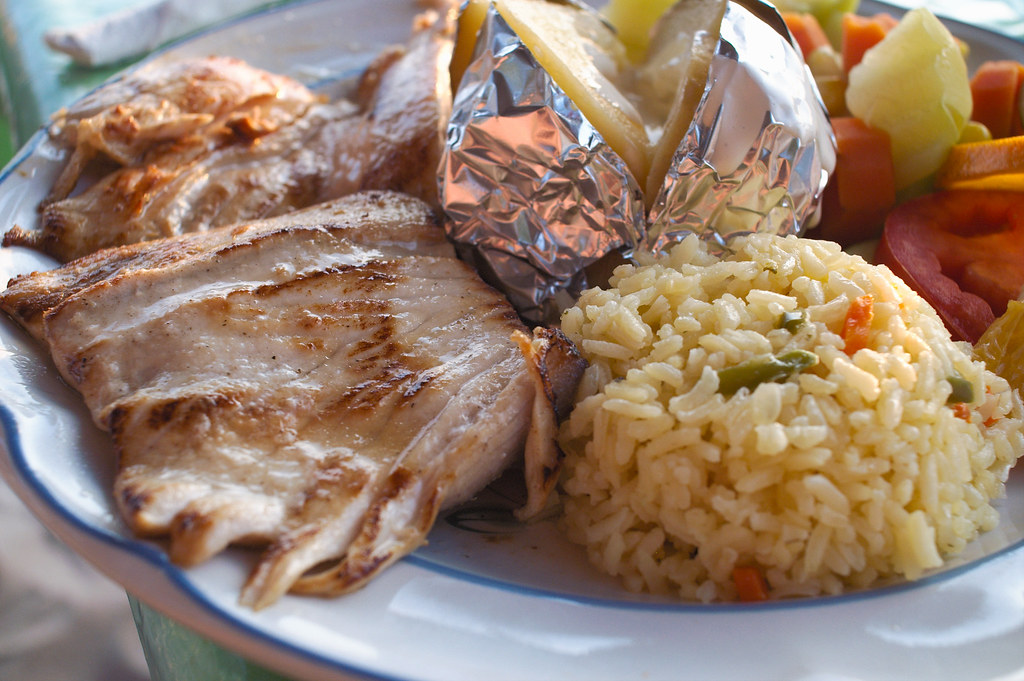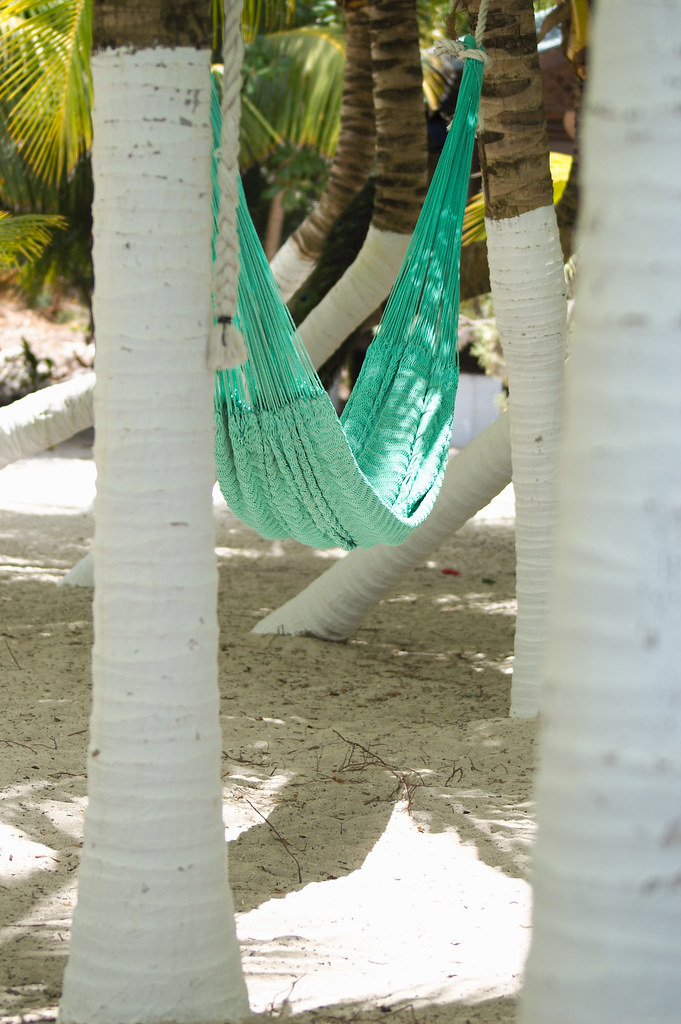My computers all have huge hard drives and large amounts of RAM, but that doesn't mean they can hold everything and do everything and still run smoothly. Computers, Windows computers at least, run better and are much happier the less stuff they have on them. Here are my favorite ways to clean up my computers and improve performance and security:
1) Delete old restore points. This isn't obviously presented as an option and isn't possible unless you've got administrator privileges. But it can reclaim a lot of hard drive space. Restore points build up each time Windows Update installs or updates anything on your computer. I haven't found an option that auto-cleans them up, so here is the method for manual deletion. These instructions are for Windows 7, but there is something very similar in Windows Vista and even Windows XP Professional.
A) Open a Windows Explorer window (windows key + E) and select your computer in the left pane, so that the hard drives are visible in the right pane. For fun, make note of the free space on your hard drive.
B) Select the main hard drive, right mouse button, and select properties. In the window that pops up, find the button that says Disk Cleanup and click that.
C) Even if you are logged in as an Administrator, you need to do this step. On the new window that pops up, find the button that says "Clean up system files" and click that. If you aren't logged in as an administrator, you have to give administrator permissions to do this.
D) Windows recalculates things, and pops up that same window as before, but this time there is another tab to choose from. Go to the More Options tab. Find the "System Restore and Shadow Copies" section, and click the button that says "Clean up..."
E) Yes, you are sure. Click Delete. (That doesn't actually do the deletion, it just sets the option that you WANT to do the deletion.) Back at the window, go back to the main Disk Cleanup tab. Review the options in the list and make sure you agree with the other checked items. Then click OK. Yes you are sure. Click Delete Files. Now you can close out of the properties dialog box and Refresh the view in Windows Explorer to see how much space you have regained.
2) Don't put an office suite on your computer. This makes the most sense for laptops with smaller SSD hard drives and computers that are mainly used for entertainment instead of work. Instead, use a free web-based office suite. The Google Docs suite has been an option for a while, but now even nicely functional versions of Microsoft Office products are available. I wouldn't recommend this for a business computer, or if you always need the ability to open a spreadsheet even if the internet is down. But it saves a lot of space and hassle with updates if none of this lives on your computer.
* Microsoft Office with Sky Drive. This was a pleasant surprise to find online. You sign up for an account and get 7 GB of free cloud storage to use with online versions of Word, Excel, PowerPoint, or OneNote. https://skydrive.live.com/
3) Delete programs and plugins without mercy. Update everything else. Go into Add/Remove programs, and start going down the list. If you don't use a program, uninstall it. If you do use a program, open it and check for updates - usually this is in the Help/About menu or screen. Uninstall all the versions of Java you see in the list, and reinstall just the freshest version from their website. Uninstall all the browser toolbars, all the partially functional software that came with the DVD drive, and all of the virus scanning and security software that isn't Microsoft Security Essentials. Do get MSE if you don't have it. It is free, unobtrusive, and has worked well for everyone I know who uses it.
4) The outside of the computer can be cleaned, too. A slightly damp microfiber towel works very well to scrub grime off of mice, controllers, and laptop surfaces. Dry microfiber cloths will remove dust. Start with clean cloths and don't press down to avoid scratching displays. I have used the CyberClean product, and find it helps most on standard keyboards because it gets between the keys. http://www.thinkgeek.com/product/b88d/
Just noticing your computer is sticky or discolored and doing something about it can make a huge difference in how new it seems.
Finally, resolve to keep your software up to date and set up an online backup service. I paid for CrashPlan+ service, which I consider a bargain - only $139 for four years of unlimited backup from one computer. http://www.crashplan.com/consumer/crashplan-plus.html That is cheaper than one external hard drive, which in my experience will either fail or run out of space in less than four years. Sorry if most of this post is obvious or things you already knew, I hope it helps a few people with maintaining their computers.
Blinky Lights and Shiny Objects
Wednesday, December 26, 2012
Thursday, March 1, 2012
Make Your House Bigger...
...by taking things out of it.
There was a weekend last year when I finally understood and internalized the raw fact that we weren't moving into a new house any time soon. We'd been in our starter house for nine years, and I checked Zillow.com, and something went "click" in my brain. If I wanted to live somewhere better with more space, it would be because I upgraded this house and got rid of a bunch of stuff.
The upgrades have gone very well, and should form the subject of many posts which are relevant to the title of this blog. This essay is about de-cluttering, specifically lessons and hang-ups experienced by a pair of engineers who were raised by people who were raised by people who lived through the depression.
I had previously considered "clutter" to mean useless trinkets set out for decoration, so I didn't think I had any. Nope. I could look around my house as a whole, and think, "How do two adults and one cat need so much STUFF to live?" Clutter can be broadly defined as any object that takes up more space than it has rights to. Useful things are making my house smaller! THIS is why it is so difficult to purge large quantities of stuff. When one has deep-seated generational worry about suddenly losing economic stability and nearly starving or freezing to death, it affects ones ability to let go of useful objects in ones possession.
Things do not make us secure, and holding extra things is not a virtue. Discarding is not a sin, or a failure, it is a natural result of being a consumer and the last step in the cycle of ownership. I need/want something, I buy/receive it, I use/enjoy it, then I discard it. Dust to dust, and all that jazz.
Enough theory and platitudes. Here's a bullet list of hints and realizations which helped me get through a purge and make a real difference in the apparent size of our living area.
*There is only one decision to make for each item I come across: are we keeping this or not? I do not need to organize what I am keeping or do any cleaning while de-cluttering.
*This is a long-term project, to be handled one item and one decision at a time. Do not set a goal about how many items I must purge, or how quickly I will finish a room. Work a little at a time, more when I feel in a groove.
*Measure progress in volumetric terms. How many cubic feet of matter is leaving my house? Once it was shoved into garbage bags to go to the curb or placed into shopping bags for donation, I could really feel like I was making a difference.
*I did the easy stuff first. I started with things with less emotional attachment. I DID NOT start with paperwork, clothing, or childhood memories. I DID start with the laundry room, linen closet, under the sinks, and in the pantry.
*Anything expired got thrown out immediately. Trash (empty envelopes? water damaged books?) got thrown out immediately. If a bottle of medicine that we use regularly expired before it was finished, I put it on a shopping list and made sure to buy a smaller size for less money this time.
*Anything that we like having around gets kept.
*I didn't put anything in the regular garbage that needed to be sent into a special waste stream. I researched where to recycle electronics and how to dispose of household hazardous waste.
*If I thought I would start using something neglected now that I unearthed it again, I put it on probation. I have a week or so to use it before getting rid of it for real.
*I am not having a garage sale. I had a virtual garage sale, where I offered things to my facebook friends for free, if they came to pick it up immediately. One friend now owns all of my planters and plant pots. I didn't move all the stuff to a different place in the house to await the garage sale that never comes.
*Seriously, if it is worth the effort to sell, I brought it to a place that would buy it on the spot. Half Price Books is my outlet of choice for this. (If you don't have one of those nearby, a pawn shop, an Ebay storefront, or a consignment store will give you a fair price for valuable discards.)
*If it was not worth the effort to sell, I gave it to a charity. People who are less fortunate can get good use out of these useful things we are parting with. In either case, I got the things out of the house and into my car so I can drop it off the next time I was near a Goodwill or a Half Price Books.
*Packaging is trash. I recycled all those cardboard boxes from electronics, and especially the custom molded foam inserts. I still had the cardboard boxes from every laptop I ever owned stashed in our crawlspace! Decorative tins are packaging, and therefore trash. I recycled the Altoid tins, the fancy tins the scotch came in, and the holiday cookie tins.
*Duplicates are clutter. After upgrading to a better version, I don't need to keep a second toaster, or a second coffee maker in case my main one breaks. I can LIVE WITHOUT IT for the twelve hours to two days I might have to wait to replace it.
*Gifts are not sacred. I doubt the people who gave us wedding gifts intended to give us burdens we'd be obligated to possess for the rest of our lives. The decision to keep or purge is not linked to how an object arrived in my hands.
*I had to train myself to see things as they are now, not as they were when I bought them or wanted them. Stuff wears out. Stuff goes obsolete. I break up with a hobby. It happens.
I learned a lot about myself while doing this purge. After looking objectively at my possessions, I am a smarter consumer. I like that I got rid of so many things. The ratio of awesome things to "meh" things in my house is much higher, too.
[I'm hoping something in this post resonates with the blog reading public - please comment if so moved.]
There was a weekend last year when I finally understood and internalized the raw fact that we weren't moving into a new house any time soon. We'd been in our starter house for nine years, and I checked Zillow.com, and something went "click" in my brain. If I wanted to live somewhere better with more space, it would be because I upgraded this house and got rid of a bunch of stuff.
The upgrades have gone very well, and should form the subject of many posts which are relevant to the title of this blog. This essay is about de-cluttering, specifically lessons and hang-ups experienced by a pair of engineers who were raised by people who were raised by people who lived through the depression.
I had previously considered "clutter" to mean useless trinkets set out for decoration, so I didn't think I had any. Nope. I could look around my house as a whole, and think, "How do two adults and one cat need so much STUFF to live?" Clutter can be broadly defined as any object that takes up more space than it has rights to. Useful things are making my house smaller! THIS is why it is so difficult to purge large quantities of stuff. When one has deep-seated generational worry about suddenly losing economic stability and nearly starving or freezing to death, it affects ones ability to let go of useful objects in ones possession.
Things do not make us secure, and holding extra things is not a virtue. Discarding is not a sin, or a failure, it is a natural result of being a consumer and the last step in the cycle of ownership. I need/want something, I buy/receive it, I use/enjoy it, then I discard it. Dust to dust, and all that jazz.
Enough theory and platitudes. Here's a bullet list of hints and realizations which helped me get through a purge and make a real difference in the apparent size of our living area.
*There is only one decision to make for each item I come across: are we keeping this or not? I do not need to organize what I am keeping or do any cleaning while de-cluttering.
*This is a long-term project, to be handled one item and one decision at a time. Do not set a goal about how many items I must purge, or how quickly I will finish a room. Work a little at a time, more when I feel in a groove.
*Measure progress in volumetric terms. How many cubic feet of matter is leaving my house? Once it was shoved into garbage bags to go to the curb or placed into shopping bags for donation, I could really feel like I was making a difference.
*I did the easy stuff first. I started with things with less emotional attachment. I DID NOT start with paperwork, clothing, or childhood memories. I DID start with the laundry room, linen closet, under the sinks, and in the pantry.
*Anything expired got thrown out immediately. Trash (empty envelopes? water damaged books?) got thrown out immediately. If a bottle of medicine that we use regularly expired before it was finished, I put it on a shopping list and made sure to buy a smaller size for less money this time.
*Anything that we like having around gets kept.
*I didn't put anything in the regular garbage that needed to be sent into a special waste stream. I researched where to recycle electronics and how to dispose of household hazardous waste.
*If I thought I would start using something neglected now that I unearthed it again, I put it on probation. I have a week or so to use it before getting rid of it for real.
*I am not having a garage sale. I had a virtual garage sale, where I offered things to my facebook friends for free, if they came to pick it up immediately. One friend now owns all of my planters and plant pots. I didn't move all the stuff to a different place in the house to await the garage sale that never comes.
*Seriously, if it is worth the effort to sell, I brought it to a place that would buy it on the spot. Half Price Books is my outlet of choice for this. (If you don't have one of those nearby, a pawn shop, an Ebay storefront, or a consignment store will give you a fair price for valuable discards.)
*If it was not worth the effort to sell, I gave it to a charity. People who are less fortunate can get good use out of these useful things we are parting with. In either case, I got the things out of the house and into my car so I can drop it off the next time I was near a Goodwill or a Half Price Books.
*Packaging is trash. I recycled all those cardboard boxes from electronics, and especially the custom molded foam inserts. I still had the cardboard boxes from every laptop I ever owned stashed in our crawlspace! Decorative tins are packaging, and therefore trash. I recycled the Altoid tins, the fancy tins the scotch came in, and the holiday cookie tins.
*Duplicates are clutter. After upgrading to a better version, I don't need to keep a second toaster, or a second coffee maker in case my main one breaks. I can LIVE WITHOUT IT for the twelve hours to two days I might have to wait to replace it.
*Gifts are not sacred. I doubt the people who gave us wedding gifts intended to give us burdens we'd be obligated to possess for the rest of our lives. The decision to keep or purge is not linked to how an object arrived in my hands.
*I had to train myself to see things as they are now, not as they were when I bought them or wanted them. Stuff wears out. Stuff goes obsolete. I break up with a hobby. It happens.
I learned a lot about myself while doing this purge. After looking objectively at my possessions, I am a smarter consumer. I like that I got rid of so many things. The ratio of awesome things to "meh" things in my house is much higher, too.
[I'm hoping something in this post resonates with the blog reading public - please comment if so moved.]
Wednesday, February 29, 2012
3D Body Scanning for a Good Reason
Public Service Announcement: your local mall might have a 3D body scanner that will tell you what pants and jeans will fit your shape. A Me-Ality kiosk recently came on-line at Woodfield Mall in Schaumburg, IL, and I tried it out this week.
If you can stand still for less than 20 seconds, fully clothed with your shoes on, and you can handle low-power radio waves reflecting off your skin, you can do this. They ask you to fill out a form with your email address, and it is worth giving a real email address, because of the information you will be getting.
After the scan, you get a bar code that refers to your measurement data now stored in their system. Mercifully, they never show or print a picture of your 3D point-cloud derriere. They do print a list of all the pants in the mall in their database that should fit you. For me, that was 6 types of dress pants and 20 types of jeans. (I was expecting "ERROR DATA NOT FOUND" as my only result, so this is a lot of matches.)
The service is free. The data is good. I found the pants that I tried on in the prescribed sizes were all the right shape, but consistently snug. I assume I just prefer more ease in my garments than their average user. Going one size up, I loved the fit.
The database isn't complete, but it is big enough to be useful. I hope more stores get on board with supplying information/samples to Me-Ality so they can keep growing. Here's why your email is important: once scanned, you can log in to the website and find out what pants and jeans will fit you from any store online, instead of limited just to the mall where you were scanned.
Imagine shopping online for pants and jeans! (That isn't just buying more copies of something you know fit last time...) It could only be better by also fitting shirts and dresses - probably in the works - or printing out custom sewing patterns or alteration templates. But, seriously, this is AWESOME use of 3D body scanning technology. Kudos to Me-Ality, and I hope you all get a chance to try it out, too.
If you can stand still for less than 20 seconds, fully clothed with your shoes on, and you can handle low-power radio waves reflecting off your skin, you can do this. They ask you to fill out a form with your email address, and it is worth giving a real email address, because of the information you will be getting.
After the scan, you get a bar code that refers to your measurement data now stored in their system. Mercifully, they never show or print a picture of your 3D point-cloud derriere. They do print a list of all the pants in the mall in their database that should fit you. For me, that was 6 types of dress pants and 20 types of jeans. (I was expecting "ERROR DATA NOT FOUND" as my only result, so this is a lot of matches.)
The service is free. The data is good. I found the pants that I tried on in the prescribed sizes were all the right shape, but consistently snug. I assume I just prefer more ease in my garments than their average user. Going one size up, I loved the fit.
The database isn't complete, but it is big enough to be useful. I hope more stores get on board with supplying information/samples to Me-Ality so they can keep growing. Here's why your email is important: once scanned, you can log in to the website and find out what pants and jeans will fit you from any store online, instead of limited just to the mall where you were scanned.
Imagine shopping online for pants and jeans! (That isn't just buying more copies of something you know fit last time...) It could only be better by also fitting shirts and dresses - probably in the works - or printing out custom sewing patterns or alteration templates. But, seriously, this is AWESOME use of 3D body scanning technology. Kudos to Me-Ality, and I hope you all get a chance to try it out, too.
Sunday, December 11, 2011
I Only Have a Green Thumb in Video Games
I play Minecraft. One of the things you can do in Minecraft is farm resources. I finished building a greenhouse around an island last night. Here is a screenshot of a view of the greenhouse taken from the glassed-in second story of my home base. That is where I grow wheat and pumpkins.
The sugar cane plants along the shore line are also part of my cultivation project. Unlike my gardening skills in real life, I'm getting significant virtual return on these plots.
The sugar cane plants along the shore line are also part of my cultivation project. Unlike my gardening skills in real life, I'm getting significant virtual return on these plots.
Sunday, May 22, 2011
DSLR on Vacation
I wouldn't usually bring a large, expensive camera on a trip that is mainly about relaxing and sand. But, now I've got this older DSLR that just sits around most of the time and wouldn't get $200 on eBay if I tried to sell it. I took it to Cozumel for our vacation, and at the very least I loved having a real viewfinder to look through on those sunny days. I only brought a few lenses, none in my "first tier" class, but more than serviceable in the Caribbean light. I even treated the post-processing more casually than usual, simply clicking the "Perfectly Clear" box in Bibble 5 and adjusting very few other parameters. Here are some of my favorite pictures:


















Sunday, March 13, 2011
70-200mm f2.8 Sony G

I figured out what lens I was going to get to cover the telephoto range. LensRentals.com sells used lenses after they've been rented out for 20 weeks or so. I bought a used copy of Sony's constant f2.8 aperture 70-200 zoom from them, which retails for $1800, for much less than that. I am so happy with this lens! I used it on a tripod to shoot a wedding ceremony, and with the in-body image stabilization on my camera I am also able to hand-hold it for walk-around shots like the one above.
The only problem is that now I want to upgrade all of my lenses to glass this nice. No one ever said photography was a cheap hobby.
Wednesday, March 9, 2011
Monday, March 7, 2011
Cross Country Audrey and Scott
I met Scott in 1996, at the nerd camp "Operation Catapult" held at Rose-Hulman Institute of Technology. We both ended up attending RHIT for college, and we both moved to the Chicago area after graduating. Scott has been a wonderful friend, the sort who you don't see all the time because they are always booked solid but you know that they would clear their calendar to help you. In 2008, he took time off from his career to hike the Appalachian Trail, a long-planned adventure that didn't end the way he expected. He wasn't able to finish the trail due to an injury, but he did meet Audrey.
Audrey and Scott are now married, and starting off on crossing the country in an orthogonal direction to their mountain hike. You can get all of the details at Cross Country Audrey and follow along with them as they bike from California to Maine. The trip is being undertaken to raise money for an organization that helps people who have been diagnosed with multiple sclerosis. This isn't a large-group corporate organized trip, this is just Audrey, Scott, and their bikes.
The journey started for real today. I wish the best of weather, health, circumstances, and experiences to both of them!
Audrey and Scott are now married, and starting off on crossing the country in an orthogonal direction to their mountain hike. You can get all of the details at Cross Country Audrey and follow along with them as they bike from California to Maine. The trip is being undertaken to raise money for an organization that helps people who have been diagnosed with multiple sclerosis. This isn't a large-group corporate organized trip, this is just Audrey, Scott, and their bikes.
The journey started for real today. I wish the best of weather, health, circumstances, and experiences to both of them!
Saturday, March 5, 2011
Gallbladder Awareness Campaign
I would like to request that whoever is teaching the medical community that gallbladder problems are only for the over-forty set, to please stop it. After my previous post, I got tired enough of severe abdominal pain after eating that I decided to keep bothering my doctor until he figured it out and fixed it.
Symptoms, for at least ten years previous, include occasional sharp stabbing aching pain in my torso, near enough to my stomach that I was told it was "just gas". Pain started 20 minutes to 45 minutes after eating a rich meal, and lasted a few hours, then went away completely. Sometimes the next few meals would also cause pain, even if they were not rich or fatty. I'd told my doctors, and nurses, and family, but no one could figure out what was really wrong. They would test my thyroid again, even though I'd already had it tested and everything was normal. They would suggest it was a food sensitivity, or an allergy to a preservative, and I had to keep food diaries and do tests. Nothing made sense, and everything came back normal.
Finally, I had an attack of the pain while I was at the doctor's office, after drinking a glass of water. He poked around my torso until I yelled out in pain. "Oh, wow, it is your gallbladder!" he said, then prescribed an ultrasound to look for gallstones.
I went to the medical reference section of the local library to start learning about WTH a gallbladder was. It turns out to not be very important, but can hurt a lot for various reasons.
The ultrasound was totally normal, no gallstones, no obvious malformations. Strike out on that one. The doctor prescribed a HIDA scan, which is where they give you an IV of radioactive tracer and watch you under a gamma camera for two hours to see where it goes. My liver did it's job, and pulled all of the tracer out of my bloodstream very quickly. It then slowly, properly, seeped into the small intestine. The gallbladder never lit up at all. (They didn't bother with the CCK IV because there would be nothing to see.) That is not normal, so we finally had a diagnosis. Biliary dyskinesia, aka "It doesn't work right."
I ended up having surgery to have the non-essential organ removed. It went well, was done laparoscopically, and I have been free of that pain since.
The medical people who could have recognized my symptoms would usually tell me they didn't suspect my gallbladder because I wasn't OLD ENOUGH. Here is what I think: people over 40 that get gallbladder attacks go to the emergency room because they think they are having a heart attack, so they get diagnosed more often. An anecdotal sampling of my facebook friends turned up six other people who had gallbladders removed before they were forty. My doctor told me recently that in the months following my diagnosis, he has found biliary dyskinesia in three other patients, who he hadn't known what to look for before. So, my point is that the age boundary of 40 years old is probably a red herring, and shouldn't be trusted to rule out this problem in patients with abdominal pain.
Symptoms, for at least ten years previous, include occasional sharp stabbing aching pain in my torso, near enough to my stomach that I was told it was "just gas". Pain started 20 minutes to 45 minutes after eating a rich meal, and lasted a few hours, then went away completely. Sometimes the next few meals would also cause pain, even if they were not rich or fatty. I'd told my doctors, and nurses, and family, but no one could figure out what was really wrong. They would test my thyroid again, even though I'd already had it tested and everything was normal. They would suggest it was a food sensitivity, or an allergy to a preservative, and I had to keep food diaries and do tests. Nothing made sense, and everything came back normal.
Finally, I had an attack of the pain while I was at the doctor's office, after drinking a glass of water. He poked around my torso until I yelled out in pain. "Oh, wow, it is your gallbladder!" he said, then prescribed an ultrasound to look for gallstones.
I went to the medical reference section of the local library to start learning about WTH a gallbladder was. It turns out to not be very important, but can hurt a lot for various reasons.
The ultrasound was totally normal, no gallstones, no obvious malformations. Strike out on that one. The doctor prescribed a HIDA scan, which is where they give you an IV of radioactive tracer and watch you under a gamma camera for two hours to see where it goes. My liver did it's job, and pulled all of the tracer out of my bloodstream very quickly. It then slowly, properly, seeped into the small intestine. The gallbladder never lit up at all. (They didn't bother with the CCK IV because there would be nothing to see.) That is not normal, so we finally had a diagnosis. Biliary dyskinesia, aka "It doesn't work right."
I ended up having surgery to have the non-essential organ removed. It went well, was done laparoscopically, and I have been free of that pain since.
The medical people who could have recognized my symptoms would usually tell me they didn't suspect my gallbladder because I wasn't OLD ENOUGH. Here is what I think: people over 40 that get gallbladder attacks go to the emergency room because they think they are having a heart attack, so they get diagnosed more often. An anecdotal sampling of my facebook friends turned up six other people who had gallbladders removed before they were forty. My doctor told me recently that in the months following my diagnosis, he has found biliary dyskinesia in three other patients, who he hadn't known what to look for before. So, my point is that the age boundary of 40 years old is probably a red herring, and shouldn't be trusted to rule out this problem in patients with abdominal pain.
Sunday, September 19, 2010
Sinusoidal Scarf
This is an easy pattern for a knitted scarf. I made it up to practice knit and purl stitches, to build up speed and work on keeping an even gauge as I go. It is supposed to be wavy when finished, resembling the shape of a sinusoid curve. This is done simply by alternating garter stitch sections, which lay flat, with stockinette stitch sections, which tend to curl towards the knit side. I alternate the side the stockinette faces to form the max and min points. So, this is a very nerdy project.
(Any yarn and needle size can be used, gauge is not important, adjust stitch count for the width of scarf you want.)
Yarn: St. Denis Nordique, 100% wool, 50g per 150 yards, 2 to 3 balls, blue eggshell
Gauge: 19 stitches for 4 inches
Needle: US 8 or 5.00mm
Cast on 30 stitches.
Rows 1-4: knit all stitches.
Row 5: purl all stitches.
Row 6: knit all stitches.
Row 7: purl all stitches.
Rows 8-13: knit all stitches.
Repeat rows 5 through 13 until scarf is desired length. Bind off.



(Any yarn and needle size can be used, gauge is not important, adjust stitch count for the width of scarf you want.)
Yarn: St. Denis Nordique, 100% wool, 50g per 150 yards, 2 to 3 balls, blue eggshell
Gauge: 19 stitches for 4 inches
Needle: US 8 or 5.00mm
Cast on 30 stitches.
Rows 1-4: knit all stitches.
Row 5: purl all stitches.
Row 6: knit all stitches.
Row 7: purl all stitches.
Rows 8-13: knit all stitches.
Repeat rows 5 through 13 until scarf is desired length. Bind off.



Subscribe to:
Posts (Atom)
Me

There aren't many photos of the photographer
Search This Blog
Flickr Badge
www.flickr.com
This is a Flickr badge showing public photos and videos from prismglass. Make your own badge here.
About Me
Friends and Family with Internet Presence
- Euuuge
- Ghetto Penthouse (Sean)
- Gin and Milk (Herb)
- Hannah's World
- Imler.dyndns.org
- Keith Casey
- Mighty Matt
- mirtft (Scott)
- Nagel Bagels (Sara and Bill)
- no calibration required (Doug)
- Power to the Meeple (Brock)
- Psychic Eggplant (Jessie)
- RGSB (Meta-Blog)
- sbyrne (Susan)
- Sean's LEGO blog
- Sid Stamm
- Sixty-four divided by four is? (Janet)
- TedBlog
- The Farming Engineers
Labels
- photography (38)
- food (33)
- work (30)
- travel (29)
- review (28)
- friends (26)
- shiny objects (26)
- engineering (25)
- exercise (15)
- shopping (15)
- walking (15)
- games (14)
- links (14)
- money (14)
- blinky lights (13)
- humor (12)
- music (12)
- books (11)
- moods (11)
- alcohol (10)
- house (10)
- reading (10)
- Bibble (9)
- Rose-Hulman (9)
- crochet (9)
- drama (9)
- party (9)
- rules (9)
- cat (8)
- running (8)
- wedding (8)
- LEGO (7)
- Mazda (7)
- restaurant (7)
- sewing (6)
- singing (6)
- Indiana (5)
- RAW (5)
- Hillsborough High School (4)
- politics (4)
- writing (4)
- garden (3)
- church (2)
- investing (2)
- Windows (1)
- cleaning (1)
- computers (1)
- funeral (1)
- golf (1)
- knitting (1)
- pattern (1)
- serger (1)
- sewwork (1)
- tea (1)
- yarn (1)





